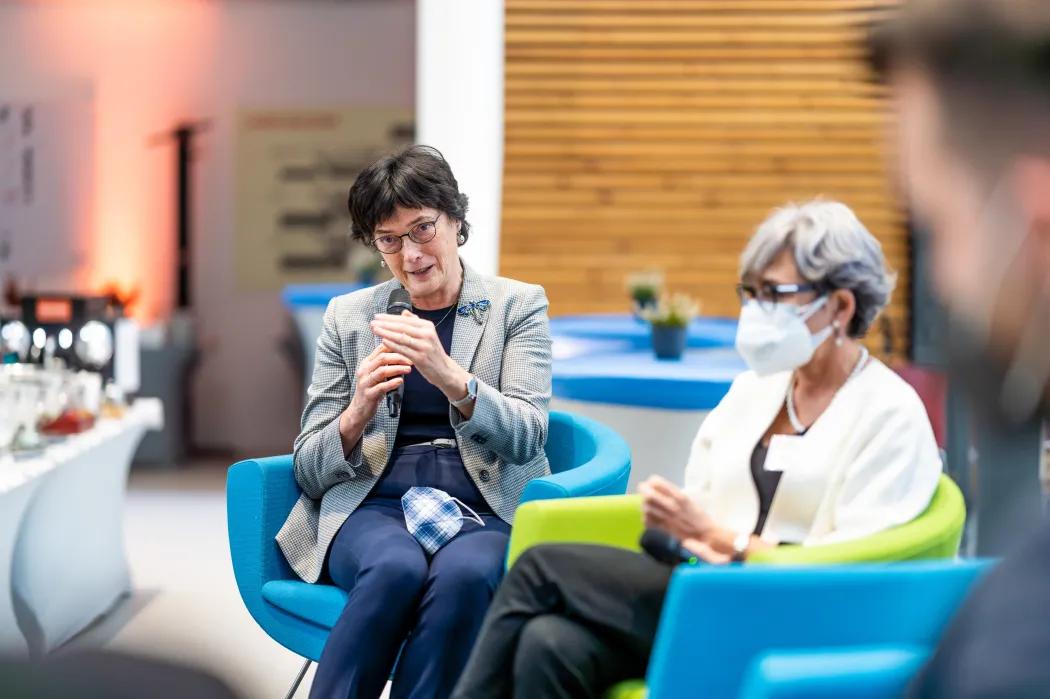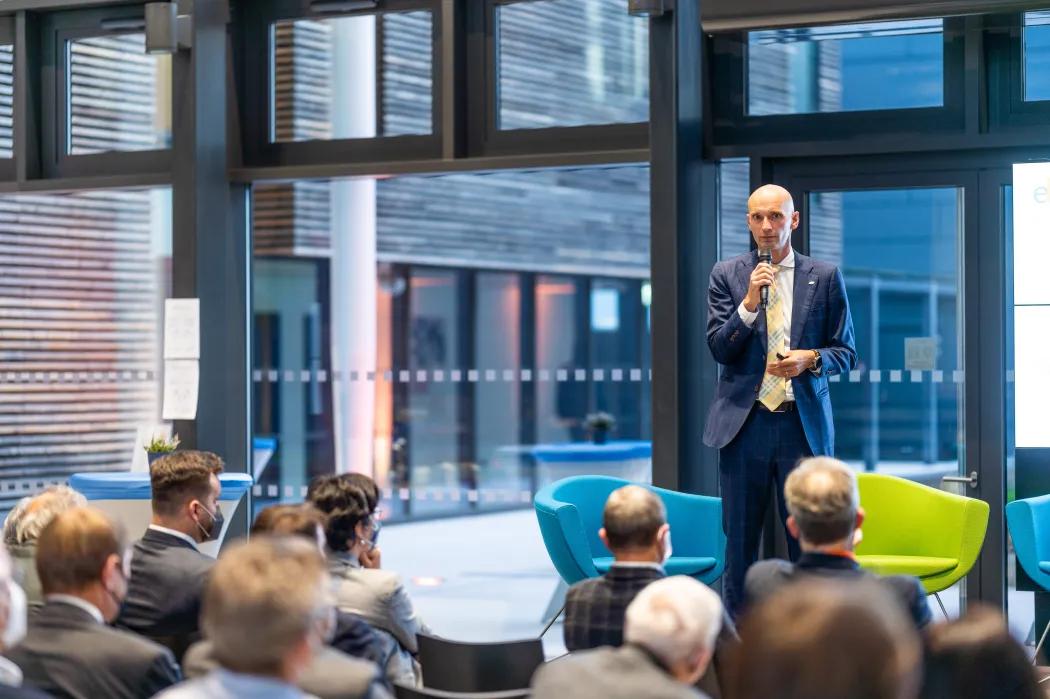This year marks a decade since the European Commission and the Czech Ministry of Education, Youth and Sports approved two unique laser research projects ELI Beamlines and HiLASE, which were both successfully implemented as part of the Institute of Physics of the Czech Academy of Sciences. In celebration of the anniversary, an official meeting attended by the representatives of leading Czech and foreign institutions took place at ELI Beamlines in Dolní Břežany. In a video-call, it was also joined on-line by Gérard Mourou, the winner of the Nobel Prize for Physics and the initiator of the centre at the European level.
“ELI Beamlines has a very promising future and a great research potential, and I believe it will make a number of ground-breaking and excellent discoveries,“ Eva Zažímalová, the President of the Czech Academy of Sciences, said in a panel discussion. The views on the projects’ national and international context were also shared by Caterina Petrillo, the President of the newly created international organisation ELI ERIC’s general assembly, by Pavel Doleček, the Deputy Minister of the Czech Ministry of Education, Youth and Sports, and by Petra Pecková, the Regional President of the Central Bohemian Region.
One of the areas discussed at the meeting was the perspectives of research alone, and the role of the aforementioned laser centres within the innovation ecosystem. In the second block of the panel discussion, these were covered in more detail by professor Jan Řídký, who was formerly a long-term Director of the Institute of Physics of the Czech Academy of Sciences and is one of the masterminds of both projects. In a video-call, Gérard Mourou, the Nobel Prize winner for Physics and the initiator of the centre at the European level, highlighted the unprecedented opportunities opening up with ELI Beamlines for a wider scientific community. A great appreciation for the possibilities of the ELI infrastructure for researchers was also shown by Roger Falcone, the former President of the American Physical Society and the current President of the International Scientific Advisory Committee for ELI Beamlines.
Roman Hvězda from ELI Beamlines, and Tomáš Mocek from HiLASE, who are the bosses of the Institute of Physics’s laser centres introduced their visions for the upcoming decade and outlined the centres’ past achievements. Michael Prouza, the current Director of the Institute of Physics, talked about the future of the centres: “At the occasion of today’s tenth birthday, it is the word transformation that comes to mind. When we take a look around us and see the beautiful and fully functional buildings of both centres, it is clear that the transformation of the location and of its surroundings has been a success. My wish for the next decade is that both centres manage to transform science and technology and achieve progress in both disciplines by generating excellent research results,” the Director said his short speech.
Following a successful implementation of the laser centre projects in Dolní Břežany, a few weeks ago, the Institute of Physics succeeded in opening a new research infrastructure for solid matter called SOLID 21. The costs of the ELI Beamlines and HiLASE projects exceeded twelve billion CZK and its implementation was enabled by the support from the Research and Development for Innovations Programme funded by the European Commission; by the Czech Academy of Sciences; by EU grants; by national grants; with the support by large research infrastructures as well as by the Institute of Physics’ own resources.
ELI Beamlines research centre (today a part of the ELI ERIC consortium) is the largest research project in Czechia. The project is a part of a European research initiative Extreme Light Infrastructure. The centre operates the most powerful laser in the world expected to achieve the power of 10 PW in 2023. The centre also enables a pioneering research in materials physics and science, as well as in biomedicine, laboratory astrophysics and other disciplines.
HiLASE research centre focuses on the development and on the testing of new generation lasers and laser technologies – that is elementary particle physics, condensed and solid matter physics, optics and plasma physics. The centre works together with industrial partners, carrying out the mission titled Superlasers for Real World.
Source: FZU, Photo: S. Pecháček






